
6 Key Components of a Winning Stump Speech

As a candidate for elected office you’re going to be giving plenty of speeches, so you’ll need to have your stump speech down pat.
Strong public speaking conveys confidence and leadership to voters.
It assures donors and supporters that you’re the right person for office.
Unfortunately, too many candidates are not good public speakers.
They don’t have a key message or theme.
Their words wander all over the place.
They don’t make sense and wind up confusing their audience.
I witnessed this the one night by a candidate who is running his own campaign.
He had good ideas. He had a solid resume.
His speech however did not effectively convey that he’s up for the job.
With a little fine-tuning he would be much better.
A good stump speech makes a huge difference in a candidate’s race, their fundraising, and in gathering endorsements.
That’s why I always work with my candidates on their stump speeches.
I’ve even turned the things I teach candidates into a premium course The Secrets of a Winning Stump Speech .
Most of my clients have never ran for office before.
They’re not used to public speaking, even in front of small groups.
Over the course of my career, I’ve noticed that there are six key components that make for a good stump speech.
If you follow these, you’ll be in good shape as a candidate and might even surprise yourself as a public speaker.
1. Who You Are and What You’re Running For
Never assume that the voters know who you are.
They likely don’t.
Your mission as a candidate for office is to build your name recognition and support for your candidacy.
Even if you’ve been introduced by someone, always begin your stump speech by telling your audience who you are and the office your running for.
If you’re married, say so and tell them how long you’ve been married.
If you have children, list your kids and how old they are, and what kind of things they’re into.
Should your spouse, children, parents, or other family members be present, be sure to point them out by name and thank them for their support for your campaign — especially if it’s your spouse.
It’s a cardinal sin in the political world to not introduce or thank your spouse.
2. Where You Come From
Voters like to elect real people from real places with real lives.
After you introduce yourself and the office you’re running for, tell them where you grew up, a little about your family life, and how that impacted your life.
If you’re running in a community where you’ve lived all of your life, or most of it, make sure that’s highlighted in your stump speech.
Mention the schools you went to, where you played sports, your first job in town, your favorite place to eat, or that your parents still live there.
This creates an instant connection with the voters and will make it easier for them to become supporters.
3. What You’ve Dones
Experience matters to voters.
They want to know that you’ve accomplished something in your life.
In your stump speech, tell them about where you graduated from college (if you did), your military service (if you served), the jobs you’ve had (if you’ve never had a job or a business — why are you even running?)
Voters want to know these things for two reasons:
1) it shows you can set goals and accomplish them
2) it demonstrates you’re not afraid of hard work
This is especially true in today’s political environment when the perception of elected officials is that they’re only in office to cash for themselves and their family members, rather than work hard and accomplish something for their constituents.
Have you noticed that critics of both Joe Biden and Donald Trump each use this line of attack?
Talk about your professional experience — the things you’ve done and learned that have prepared you for office.
If you volunteer or are active in community organizations, put this in your stump speech.
But please be careful not to come off as bragging.
That will turn off voters rather than endear them to you.
Yes, Donald Trump violates this admonition often, and it reflects negatively his approval ratings and poll numbers.
If Trump who can get away with so much that other candidates cannot is still damaged by this, don’t think you’ll fare any better.
4. What You Want to Accomplish
Voters like candidates who have a plan.
They want to know why you’re running for office and what you intend to do once you’re elected.
The best way to clarify this is by understanding what your campaign is about in one sentence, as detailed in this article.
When giving your stump speech, incorporate your One Sentence into your remarks and build upon it.
It’s best to have three specific things you want to accomplish.
Your goals should align with three problems that need to be fixed.
Hopefully you’ve done some polling or other type of opinion research so you’ll know what issues and problems are foremost on your voters’ minds.
State each problem, describe how you’d like things to be better, and outline the steps you believe that can be taken to get there.
While you need to show that your plan is realistic, be careful not to get into too many specifics with your solutions to these problems.
While you need to know the specifics for when you are elected, and when people ask you for details, giving specifics and details in your stump speech will bore your audience.
Bored voters don’t convert into supporters.
Excited voters do, plus they tell their friends to vote for you.
5. It’s Not About I, It’s About We
One of the biggest pitfalls candidates for elected office can face is making it all about themselves.
While you may be the one running, elections are not about candidates.
They are about voters.
Elections are where the voters get to have their say on people and policy.
If you make it about you, you’ll fall into the “I, me, mine” trap, become labeled as a “politician” and turn off the voters you need.
When giving your stump speech always change the word “I” to the word “we” when it’s possible.
Clearly, when talking about where you grew up, went to school, work, and your family, you’re going to use “I.”
But when you are talking about what you want to do in office, things that you’ve been a part of in your community, or accomplishments you were involved in as part of a larger organization, use the word “we.”
Speaking to your audience with the word “we” creates a bond and buy-in with your ideas. That’s the effect that you’re after with your stump speech.
In 2016, Hillary Clinton severely violated this rule.
She had supporters say, “I’m with her.”
It didn’t work because she was asking the voters to focus on her as the candidate — rather than focusing on the voters and the shared mission they were on together.
Donald Trump spun that around masterfully and told his supporters “I’m with you.”
6. Close Strong
Closing your stump speech the right way is important.
After you’ve listed what you want to do in office, tell the audience that you can’t do this without their help.
Weaving “we” throughout your stump speech ties this in nicely for your finish.
If you’re talking to voters, ask them for their votes.
If you’re talking to donors, ask them for their contributions.
If you’re talking to leaders of an organization that endorses, ask them for their support.
There’s no reason for anyone to give you what you want unless you specifically ask for it.
As one professor I had always said, “If you don’t ask, you don’t get.”
Make the ask then it’s time for you to go.
End by thanking your audience for their time.
Always do this. Tell them you appreciate taking the time to listen to you.
Grateful candidates tend to be winning candidates.
Candidate Take-Aways
If you follow these six rules you’ll be able to craft an effective stump speech.
Go figure yours out and write it out word for word.
After you write it out, go and learn it.
Learn it and practice your stump speech, but don’t memorize it.
You don’t want to come off like a robot.
If it helps, write an outline of our speech and refer to that when you’re speaking.
The first speech you give will likely be difficult and you may hate doing it.
That’s fine.
Keep giving your stump speech.
You’ll get better at it each time you speak.
Before you know it you won’t need an outline to refer to, you won’t be nervous, and people will be coming up to you when you’re finished telling you what a great speaker you are.
Now if you’d like to go deeper and learn exactly how to write, rehearse, and deliver a solid stump speech, t ap this link for instant access to the premium course Secrets of a Winning Stump Speech.

Copyright 2015 - 2023, Brian Floyd Enterprises, Inc. Design & Developed by Themagnifico

Political Campaign And Stump Speech Examples Reveal The Candidate
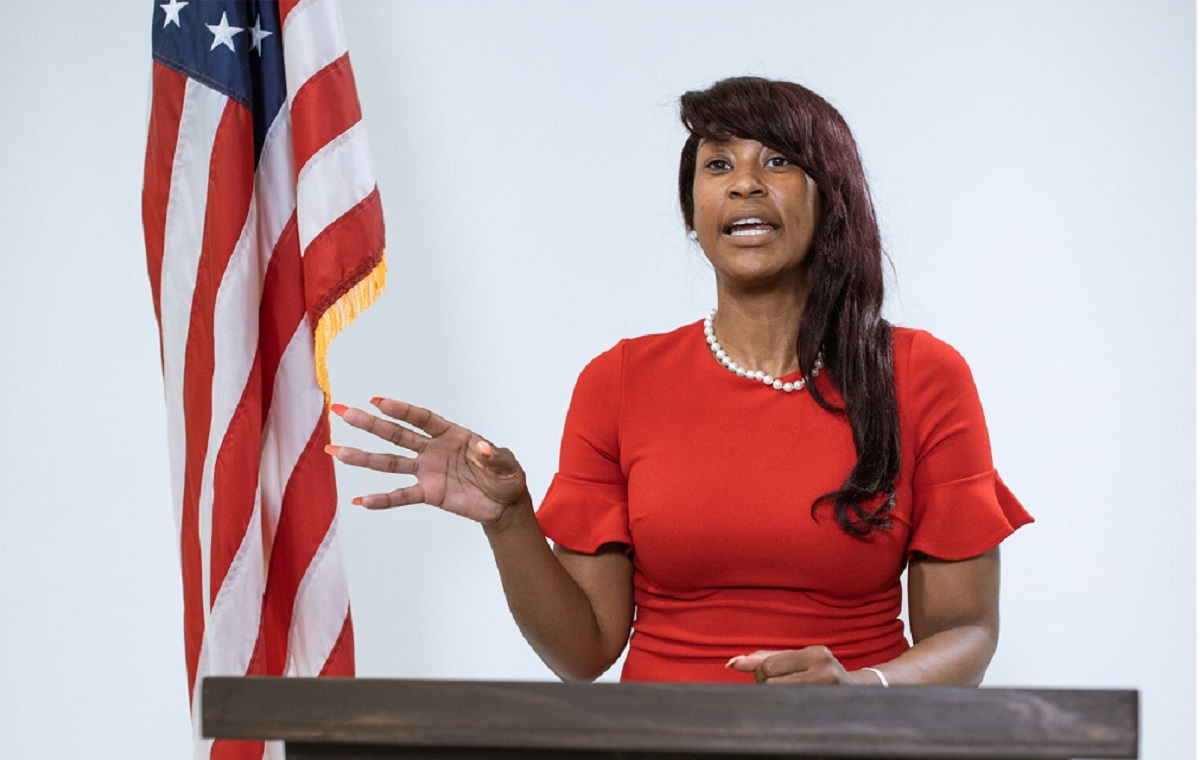
Candidates for political office make stump or campaign speeches to help voters learn about themselves and their positions throughout the campaign. Here are some examples of political campaign and stump speeches.
In the dynamic world of politics, one powerful tool remains a constant in winning over voters’ hearts and minds: the stump speech. This iconic oratory tradition has shaped countless political campaigns, delivering a potent blend of charisma, policy promises, and persuasive rhetoric.
From fiery appeals for change to heartfelt tales of personal struggles, stump speeches have become the backbone of political communication.
This article explores compelling examples of stump speeches throughout history, unveiling their enduring impact on electoral campaigns and their crucial role in shaping the political landscape.
Table of Contents
What Is A Stump Speech In A Political Campaign?
A stump speech is a standard, rehearsed speech a political candidate delivers during their campaign. It typically outlines the candidate’s core message, policy positions, and personal background, aiming to connect with voters, inspire support, and differentiate themselves from opponents.
A stump speech is essentially an elevator speech where the candidate makes a pitch to constituents.

How Does A Stump Speech Vary From A Campaign Speech?
While a campaign speech is a broader, more comprehensive address covering various topics and contexts, a stump speech is specifically tailored to connect with local audiences during campaign stops.
A stump speech focuses on key themes, repeated consistently across different locations, with an emphasis on connecting personally with voters, conveying authenticity, and generating enthusiasm for the candidate’s platform.
What Should A Politician Say About Themselves?
Politicians should highlight their relevant qualifications, experience, and achievements when speaking about themselves , demonstrating their ability to address the issues. They should also convey their personal values, integrity, and dedication to public service, establishing trust and credibility with the electorate.
How Do You Start Off A Campaign Speech?
“Ladies and gentlemen, distinguished guests, and fellow citizens, I stand before you today with a deep sense of gratitude and determination to embark on a journey together toward a brighter future for our community.
“Thank you all for gathering here today as we embark on a transformative campaign to shape a better tomorrow for our beloved community. With your support and collective efforts, we can build an inclusive, prosperous future filled with opportunities for all.”
What Should You Say In A Campaign Speech?
In a campaign speech, it is crucial to articulate your vision, share specific policy proposals, and address the concerns and aspirations of your constituents. Highlight your experience, values, and dedication to serve while emphasizing the need for unity, progress, and collaborative solutions to tackle the challenges our community faces.
Here is an excerpt:
“In this campaign, we must address the pressing issues affecting our constituents daily, such as education, healthcare, and economic stability, while fostering unity and collaboration to create a stronger, more resilient community for generations to come.
Together, we can bring about meaningful change, empower our citizens, and build a brighter future that reflects the hopes and dreams of each and every one of us.”
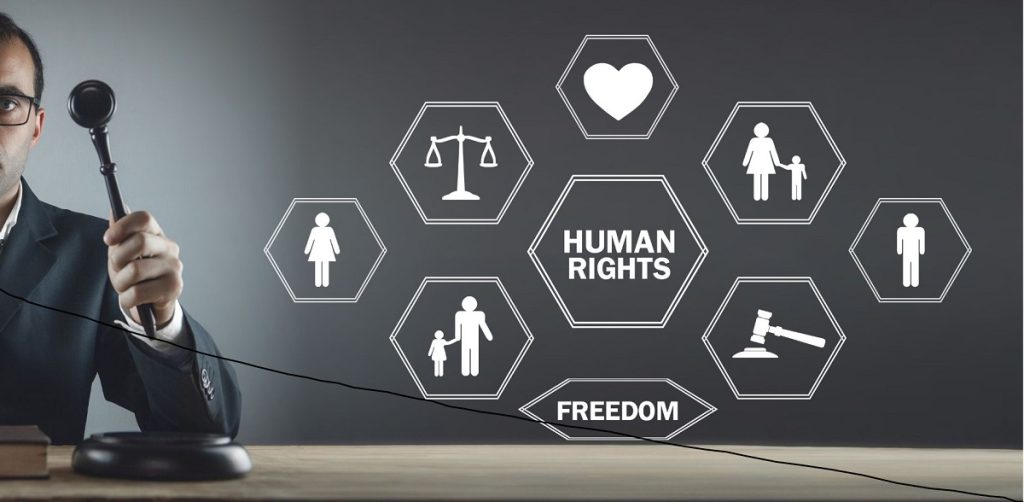
How Long Should A Campaign Speech Be?
A campaign speech should be concise and focused, aiming for around 5 to 10 minutes, allowing you to effectively communicate your message while maintaining the audience’s attention and engagement. Remember, it is crucial to prioritize quality content over excessive length to make a lasting impact on your listeners.
What Should You Do After Finishing A Stump Speech?
After delivering a stump speech, engaging with the audience is essential, and you must also show genuine interest in their concerns and feedback. Take the opportunity to connect with individuals, answer questions, and build relationships to establish trust and support for your campaign.
What Should Be Said In The Conclusion Of A Stump Speech?
In the conclusion of a stump speech, it is crucial to summarize your main points and reiterate your core message, leaving a lasting impression on your audience. You can also end the address by inspiring and rallying your supporters, calling them to action, and emphasizing how important their involvement is to the campaign.
Different ways to end a stump speech can include:
- Call to action: Encourage your audience to get involved, vote, volunteer, or contribute to your campaign, emphasizing the collective power of their actions.
- A personal story or anecdote: Share a heartfelt story your audience can connect with on an emotional level, reinforcing your commitment to their concerns and aspirations.
- Inspiring quote: Close your speech with a memorable and inspiring quote that encapsulates your campaign’s values or captures the essence of your message.
- Vision for the future: Paint a vivid picture of the future you envision for your community, highlighting the positive impact your campaign can make and leaving your audience hopeful and motivated.
The best way to end a campaign speech ultimately depends on your personal style, the context, and the specific objectives of your campaign. Consider what resonates most with your audience and aligns with your campaign’s tone and goals.
Stump Speech Examples That Define Candidates

These nine stump speeches are notable for their ability to connect with audiences, convey a powerful message, and leave a lasting impact on listeners:
- Barack Obama’s 2008 “Yes We Can” speech as presidential candidate became iconic, inspiring hope and calling for change. Ex-President Obama’s message of unity and progress resonated with millions of Americans.
- Martin Luther King Jr.’s history 1963 “I Have a Dream” speech during the March on Washington advocated for racial equality and justice for African Americans. His powerful words continue to inspire generations.
- Delivered during World War II, Winston Churchill’s “We Shall Fight on the Beaches” speech rallied the British people and affirmed their determination to resist Nazi aggression, symbolizing their resolve and resilience.
- Elizabeth Warren’s speeches on income inequality and economic fairness, such as her 2012 speech at the Democratic National Convention , have gained attention for advocating for a more equitable society.
- One of Donald Trump’s most notable stump speeches was the one delivered at the Republican National Convention in July 2016, where he formally accepted the party’s nomination for running for president. This speech emphasized his platform on immigration, national security, and job creation while highlighting his outsider status and promising to “Make America Great Again.” It resonated with many of his supporters and helped solidify his message during the campaign.
- One of Joe Biden’s most memorable speeches was his address in Pittsburgh, Pennsylvania, in August 2020. In this speech, Biden presented his economic recovery plan, emphasizing the need for unity, addressing systemic racism, and rebuilding the economy in the wake of the COVID-19 pandemic. He focused on his vision for “ Build Back Better” and stressed the importance of creating jobs, supporting working families, and tackling the climate crisis.
- A notable Hillary Clinton speech was her address at the Democratic National Convention in July 2016. In this speech, Clinton accepted the Democratic Party’s nomination for president and focused on themes of unity, inclusivity, and progress. She discussed her policy proposals, highlighted her experience and qualifications, and called for the American people “to come together to address the challenges facing the nation.”
- Ronald Reagan’s “A Time for Choosing” speech is often regarded as one of the most impactful political speeches in American history and played a significant role in shaping his political career and eventually leading to his own presidency in 1981. Reagan delivered this speech supporting Barry Goldwater’s presidential campaign on October 27, 1964, just days before the U.S. presidential election.
- Abraham Lincoln’s most famous stump speech was his Cooper Union Address, delivered on February 27, 1860, in New York City. The speech primarily focused on the issue of slavery and its expansion, but Lincoln also touched upon foreign policy concerns. In the Cooper Union Address, Lincoln argued against the spread of slavery into new territories, emphasizing its moral and constitutional implications.
Adam Howarth
Adam covers the topic of Public Speaking for Digital Authority. From his first experience of oratory with his school debating society to his more recent experiences of promoting the local business scene in Wrexham, Wales, he has always been involved in public speaking.
Recent Posts
Active Listening Absorbs The Whole Message, Not Just The Words
Active listening goes beyond hearing the words someone is saying to you and understanding the message they are conveying. Many only hear a small percentage of what is being said as they are...
Counteracting Fear Of Public Speaking With Coaching And Therapy
Nearly 75% of people experience the social phobia of fear of public speaking. The result may be nervousness before speaking or a full-blown panic attack. Practicing public speaking may lessen the...

7:00 AM EST | FEB 18, 2016
The Perfect Democratic Stump Speech
We asked democratic speechwriter jeff nussbaum to write a totally pandering stump speech for an imaginary democratic presidential candidate — one who espouses only positions that a majority of democrats agree with (we also did the same with republicans ). here’s the speech he wrote, including notes to explain his phrasing, behind-the-scenes tips on appealing to democratic voters and the data he used to decide which positions to take..
By Jeff Nussbaum
Research by Harry Enten , graphics by Ella Koeze , production by Gus Wezerek
Thank you, CITY.
Every election is a choice. And this year, the choice could not be more clear.
And even more than a choice between parties, or personalities, it’s a choice between philosophies.
You see, we look at our country and say: We know what it takes to make our economy stronger and fairer. We know what it takes to make our communities safer. We know what it takes to make college more affordable, and retirement more secure. We know that we need to strengthen, not abandon, the promise of public education. We know that inclusion makes us stronger, and so, by the way, do the immigrants who come here to play by the rules and build better lives. We know what it takes to lead the world both with the example of our power, and with the power of our example.
We know what needs to be done. When I place my hand on the Bible and John Roberts has to pretend to smile while he swears me in as your next president, I’ll offer you another oath: We’re going to get to work.
Listen to our opponents and you hear a different refrain. Listen to all of their talk about liberty and freedom and government getting out of your way — and what you’ll really hear is one thing over and over: We are powerless in the face of our problems. There’s nothing we can do.
But I want to ask you a question: What if, at the most pivotal moments in our history, their philosophy had won the day?
What if, at the height of the Depression, Franklin Roosevelt looked out on America and said, “I see one-third of a nation ill-housed, ill-clad, ill-nourished … and there’s nothing we can do”?
There’d be no Social Security — and today, 22 million Americans would be thrown into poverty just like that.
What if John F. Kennedy saw Russia getting ready to point nuclear missiles at us from Cuba and said, “There’s nothing we can do”?
What if Lyndon Johnson had said, “I know we say all men are created equal … but there’s nothing we can do”?
There’d be no Civil Rights Act. No Voting Rights Act.
What if Bill Clinton had said, “George H.W. Bush left us a pretty bad recession, and people can be fired from their jobs just for wanting to take some time off to care for a family member … but there’s nothing we can do”?
What if Barack Obama had said, “I know millions of Americans don’t have health coverage … I know we’re mired in two seemingly endless wars in Iraq and Afghanistan … I know we’re in the worst recession since the Great Depression, but can we change things? No. We. Can’t.”
Republicans say there’s nothing government can do, as if government is some entity that rules us. But this is a democracy. Government is us. By us and for us. And creating the America we want is up to us.
So in this election, you have a choice. You have a choice between a party that — to a man, and yes, it is almost entirely men — says government can’t do anything, and then they get into office and set out to prove it.
And you have us, who look out on an America that we, too, believe is exceptional — but we know isn’t perfect — and seek to make it that more perfect union.
So if you want to “make America great again” there’s a surefire way to do it: Elect a Democrat.
If you want someone “who can fix it,” there’s an easy way to find that someone: Look for a Democrat.
The Economy
And that work begins with our economy.
Today, working Americans feel like they’re playing a rigged game. Heads, Wall Street wins. Tails, Main Street loses.
When a bunch of bankers rig the interest rates so that you pay more to borrow for your house, or your car — that’s a rigged game.
When companies stash their profits offshore and millionaires and billionaires squirrel their money in tax shelters and sneak it through tax loopholes, refusing to pay their fair share to the country whose laws and infrastructure and universities allowed them to accumulate that wealth to begin with, that’s not fair.
When the top 25 hedge-fund managers in this country are making more than all of America's kindergarten teachers combined , and usually paying a lower tax rate, too, that’s not fair.
Close the loopholes. Tell American companies that if you want to profit under the protection of our laws, bring those profits home. Create a fairer economy. That’s something we can do to make America work for everyone.
When Donald Trump can escape from his own bad deals by declaring bankruptcy four times, but Americans who can’t afford to pay a traffic ticket go to jail — it’s a rigged game.
That’s not the free market. It’s a fixed bet. It’s loaded dice.
Since 1978, CEO compensation has gone up by 937 percent. Worker productivity went up by 65 percent. But what did the workers who delivered that productivity and who made it possible for those CEOs to take home an average of more than $15 million last year get? Nothing.
When America’s workers play a rigged game, we all lose.
When unions are busted and workers can’t organize, we all lose.
But look at what happens when you raise wages, even by a modest amount.
When you raise the minimum wage, you give money to the people who spend more. If you give someone a $1 tax rebate or other one-time break, they only spend about 50 cents. But when you increase their income by a dollar, they actually spend more than a dollar, because, knowing they can count on those wages going forward, they can use credit. And by the way, if the minimum wage had gone up with productivity, today it would be nearly $22 an hour.
Plus, a higher minimum wage pushes up near-minimum-wage salaries.
Basic decency and sound economics both bring you to the same conclusion: It’s time to raise the minimum wage.
Again, that’s something we can do to make America work for everyone.
And by the way, in 2007, when the House passed a minimum wage increase, 82 Republicans voted for it. It got 94 votes in the Senate, half of them from the Republican Party.
This is not your father’s Republican Party. And if you have a grandfather who voted for Barry Goldwater, it’s not even his Republican Party. If Ronald Reagan showed up at a meeting of today’s Republican Party, he’d be laughed out of the room as too liberal.
Of course, if we really want to strengthen our economy, the best answer, the only answer, is to educate our way forward.
And education doesn’t mean teach our kids how to fill in little bubbles on a test sheet. It means strong community schools and well-trained teachers who not only spark a love of learning, but prepare our children for college, for careers, and for life.
We need to treat teachers like the professionals that they are.
And we know that in today’s economy, a high school diploma isn’t enough. College is essential. And more than ever, it’s expensive. The average student graduates college today with more than $35,000 in debt.
We’re basically telling our students that your degree is a mighty tool that you can use to do whatever you want. So long as the first thing you do with it is use it to pay off your loans.
So here’s something we can do to make America work for everyone: We can make sure that every student in this country has the opportunity to get a community college degree for free. And we can make sure that students who do take out loans can get the same low rates the banks get when they borrow money. Why should a student pay more to borrow money than Morgan Stanley?
Health Care
And when it comes to making things more affordable, here’s another something we can do: We can tell Republicans to stop trying to repeal Obamacare.
Sixty-one times, they’ve voted to repeal a health care law that the Supreme Court says is constitutional, and that 15 million Americans who now have health care can attest is working. It’s this simple: Costs are coming down. Coverage is going up. And it’s time for Republicans to get over it.
Entitlements
Education helps people get the best start in life. During their working lives, health care protects people from fearing that illness could mean losing everything. And we want to make sure our fellow Americans can feel just as secure in their later years.
That’s why when it comes to Medicare, nobody should have to decide between filling her grocery cart and filling her prescriptions.
And that’s why I’ll make you this simple pledge that my opponents won’t: The Social Security you know, the Social Security you depend on, the Social Security that provides a retirement with dignity and survivors benefits to those who will live out their lives without their life partners … that Social Security will be there for you.
Because when it comes to keeping the combined promise of Medicare and Social Security — that’s not just something we can do, it’s the least we can do.
Just as we work to make our neighbors and friends and loved ones more secure in their own lives, we can also do much more to make us all more secure in our communities.
Fort Hood. Binghamton. Aurora. Oak Creek. Newtown. The Navy Yard. Santa Barbara. Charleston. San Bernardino. And it’s not just the mass shootings that capture the headlines. It’s the daily tragedies of the streets of Chicago, and Los Angeles, and cities and towns all across our country. Thirty thousand Americans are killed by gun violence every year. When will we say enough?
There are some who see this plague and say, the only thing we can do is offer our thoughts and prayers.
But I think we ought to listen to the words of Congressman John Lewis: “When you pray, move your feet.”
We’ve got to move our feet. And we’ve got to recognize that there are ways, totally consistent with the Second Amendment, to make sure that criminals, terrorists and other dangerous people don’t get guns. This isn’t about hunters or sportsmen, who are some of the most responsible gun owners I know. This is about recognizing that there’s simply no reason for anyone to own an assault weapon. And we should all be able to agree that if you want to buy a gun, no matter where you want to buy it, you get a background check.
The gun lobby may own Congress, but they don’t own us. And we’re going to do something about gun violence in this country.
Immigration
And I want to say something to those of you who have chosen to make America your home.
I know there are politicians who say that they want to build a “yuuuge” wall to keep people like you out. They say they want you to “self-deport.” But I want to lead a country that will allow you to work hard, play by the rules and better your life here in America.
President Obama has made it possible for 2 million young immigrants to stay in the only country they’ve ever called home. I want to go further and fix our broken immigration system for good.
Because yes, that’s something we can do.
Recently, I read a story about a woman named Linda who came here from Syria. Her crime back at home was to live in a neighborhood where several people had led peaceful protests. So Assad’s government bombed their neighborhood. Soldiers ransacked their home, stealing cash and jewelry. Linda’s five daughters had to walk around army tanks to go to school. And then Linda gave birth to a son. Because he was born with jaundice, he was receiving treatment at the hospital when the government, believing that a rebel was hiding there, shelled the building. Her child’s life lasted all of seven days. After a year of applying — and a rigorous series of interviews that we put all people seeking to settle here through — we, America, gave them the right to resettle here. These people are Muslims. They love our country. They’re grateful to America. And they’re working hard to make it in America.
These aren’t the terrorists. They’re the people fleeing the terrorists.
If you’re someone who can trace your family to this country before the Pilgrims arrived, God bless you. I’m guessing most of us can’t. So let’s make America the beacon of hope it was for our parents and grandparents and great-grandparents.
Foreign Policy
Look around the world today, and you see nuclear tests in North Korea, ISIS seeking territory in the Middle East and spurring attacks outside it. We have to protect against hijackers … and hackers. Never before have we faced so many threats, in so many places.
So I get why there are some out there who want to simplify things. With us or against us. Put a wall up, or drop some bombs down. To them, the world is as simple as it is scary.
But we know that the world is something else — it’s interconnected.
When someone who aspires to be our president says we should register Muslims — ISIS uses that to recruit more terrorists.
When kingdoms and petro-dictators in the Middle East don’t give their young people something real to live for, radicals are happy to step in and give them something false to die for.
But our best defense against militant Islam is moderate Islam.
Our best defense against extremism is to drain the swamps from which it rises — and to do that we have to be strong as well as smart, supporting development when possible and deployment only when absolutely necessary.
Yes, we have the only military force in the world capable of projecting force anywhere around the world, at any time. Look at Osama bin Laden’s notes from his hideout. He was terrified that we could listen to him, track him and kill him. He was right to be scared.
(hold for applause)
And so should anyone who means to harm American people, at home or abroad.
And when we send our men and women to protect us abroad, we'd better make sure they receive the benefits they've earned when they come home. They served us, and we have an obligation to serve them!
Of course, there is one threat right in front of us — and that is the threat of climate change. Yes, voters get to judge an elected official every two or four or six years. But I believe we’ll face a much more meaningful judgment. The judgment of our children, and grandchildren, who will say to us: “When the science was so clear, and storms were getting more severe, and cities and entire countries were sinking, why weren’t you brave enough to do something?”
This shouldn’t be a political issue. In 2008, the GOP platform acknowledged the impact of human activity on our climate. John McCain campaigned on cap-and-trade. But when your biggest funders also happen to be the biggest polluters … which Koch Industries is … well I guess in today’s Republican Party, whose bread I eat, his song I sing.
In Paris, we’ve taken a good step. But how strong a step it is and whether it’s followed by more depends on who we elect.
Supreme Court
And there’s something else that depends on who we elect. The Supreme Court. We already have a Supreme Court that denied Lilly Ledbetter fair pay and that’s rolled back the Voting Rights Act. We are one right-wing justice away from putting the government directly between a woman and her doctor, between two people who love each other, between you and your desire to have a voice on the job. And we can’t let that happen. And with me as your president, we won’t.
In our courts, and in Congress, I will defend a woman’s right to choose.
Look, we all learned everything we need to know about this country when we took drivers ed. If you want to go backward, put it in R. But if you want to go forward, put it in D!
And we need to move forward.
For women’s rights, and workers’ rights, and civil rights. Forward!
To ensure that black lives do indeed matter. Forward!
To create a fairer, safer, more prosperous America for everyone.
(Crowd is now responding: Forward! )
To create an America where every child gets a world-class education. (Forward!)
Where every worker earns a decent wage. (Forward!)
Where every senior has a retirement with dignity. (Forward!)
Where every person is allowed to worship the god of their choice and love the person of their choice, where every woman is allowed to make her own health care decisions … and is paid the same as a man for doing the same job. (Forward!)
To fight the rising tide of extremism, and the rising tide of a changing climate. (Forward!)
My friends, we can bend the arc of history toward justice.
This is within our power.
But for us to do something, I need you to do something.
I need you to vote. I need you to get your friends and neighbors to vote.
I ask you to stand with me. Join me. And together we’ll build the country we know we can be.
Thank you, and may God bless America.
Illustration by Joel Plosz.
RELATED STORIES
Comments add comment.
- FiveThirtyEight
Terms of Use and Privacy Policy and Safety Information/ Your California Privacy Rights / Children's Online Privacy Policy are applicable to you. ©2015 ESPN Internet Ventures. All rights reserved. Interest-Based Ads
Stump Speech

Dec 21, 2020
Political Communication Strategy - Don't Skimp on Speechwriting
by Elena Veatch
Every good political communication strategy should include a plan for speechwriting. Even if your campaign doesn’t anticipate churning out a ton of speeches, make sure you have a process ready to go for writing and finalizing speeches. If you’re running for office even at the local level, chances are you’ll want to have a speech prepared at least for Election night. If you’re intimidated by the speechwriting process, don’t panic—you can follow a simple formula to write a good speech.

Jan 02, 2020
Stump Speech: The Ultimate Speechwriting Guide
by Martín Diego Garcia (He/Him)
Here is our ultimate guide to writing a great stump speech. We all know that the candidate is the campaign’s best asset, and the stump speech is the best campaign tool for delivering a 7C’s (clear, concise, contrastive, connective, creative, compelling, consistent) message and personal story about the candidate and campaign.

Aug 19, 2019
Speechwriting: 7 Questions with Eric Schnure
Eric Schnure is a former speechwriter for Vice President Al Gore who has been a freelance writer and communications consultant for over 20 years. Eric has spent his career helping elected officials, business and nonprofit executives, and entertainers hone their public speaking. He is known for incorporating humor into his speechwriting which led him to cofound the Humor Cabinet, a communications consulting firm.

Jul 17, 2017

Write a Political Speech
by The Campaign Workshop
Definition of Stump Speech
Kean Collection /Getty Images
- Important Historical Figures
- U.S. Presidents
- Native American History
- American Revolution
- America Moves Westward
- The Gilded Age
- Crimes & Disasters
- The Most Important Inventions of the Industrial Revolution
- African American History
- African History
- Ancient History and Culture
- Asian History
- European History
- Latin American History
- Medieval & Renaissance History
- Military History
- The 20th Century
- Women's History
:max_bytes(150000):strip_icc():format(webp)/McNamara-headshot-history1800s-5b7422c046e0fb00504dcf97.jpg)
Stump speech is a term used today to describe a candidate's standard speech, delivered day after day during a typical political campaign. But in the 19th century, the phrase held a much more colorful meaning.
The phrase became firmly established in the early decades of the 1800s, and stump speeches got their name for a good reason: they would often be delivered by candidates who literally stood atop a tree stump.
Stump speeches caught on along the American frontier, and there are numerous examples where politicians were said to be "stumping" for themselves or for other candidates.
A reference book in the 1840s defined the terms "to stump" and "stump speech." And by the 1850s newspaper articles from around the United States often referred to a candidate "taking to the stump."
The ability to give an effective stump speech was considered an essential political skill. And notable 19th-century politicians, including Henry Clay , Abraham Lincoln , and Stephen Douglas , were respected for their skills as stump speakers.
Vintage Definition of Stump Speech
The tradition of stump speeches became so well-established that A Dictionary of Americanisms , a reference book published in 1848, defined the term "To stump":
"To Stump. 'To stump it' or 'take the stump.' A phrase signifying to make electioneering speeches.
The 1848 dictionary also mentioned "to stump it" was a phrase "borrowed from the backwoods," as it referred to speaking from atop a tree stump.
The idea of linking stump speeches to the backwoods seems obvious, as the use of a tree stump as an improvised stage would naturally refer to a location where land was still being cleared. And the idea that stump speeches were essentially a rural event led to candidates in cities sometimes using the term in a mocking manner.
The Style of 19th Century Stump Speeches
Refined politicians in the cities may have looked down on stump speeches. But out in the countryside, and especially along the frontier, stump speeches appreciated for their rough and rustic character. They were free-wheeling performances that were different in content and tone from the more polite and sophisticated political discourse heard in the cities. At times the speech-making would be an all-day affair, complete with food and barrels of beer.
The rollicking stump speeches of the early 1800s would typically contain boasts, jokes, or insults directed at opponents.
A Dictionary of Americanisms quoted a memoir of the frontier published in 1843:
"Some very good stump speeches are delivered from a table, a chair, a whiskey barrel, and the like. Sometimes we make the best stump speeches on horseback."
John Reynolds, who served as governor of Illinois in the 1830s , wrote a memoir in which he fondly recalled giving stump speeches in the late 1820s .
Reynolds described the political ritual:
"Addresses known as stump-speeches received their name, and much of their celebrity, in Kentucky, where that mode of electioneering was carried to great perfection by the great orators of that state.
"A large tree is cut down in the forest, so that the shade may be enjoyed, and the stump is cut smooth on the top for the speaker to stand on. Sometimes, I have seen steps cut in them for the convenience of mounting them. Sometimes seats are prepared, but more frequently the audience enjoys the luxury of the green grass to sit and lie on."
A book on the Lincoln-Douglas Debates published nearly a century ago recalled the heyday of stump speaking on the frontier, and how it was viewed as something of a sport, with opposing speakers engaging in spirited competition:
"A good stump speaker could always attract a crowd, and a wit combat between two speakers representing opposite parties was a real holiday of sport. It is true that the jokes and counterstrokes were often feeble attempts, and not very far removed from vulgarity; but the stronger the blows the better they were liked, and the more personal, the more enjoyable they were."
Abraham Lincoln Possessed Skills as a Stump Speaker
Before he faced Abraham Lincoln in the legendary 1858 contest for a U.S. Senate seat, Stephen Douglas expressed concern about Lincoln's reputation. As Douglas put it: "I shall have my hands full. He is the strong man of the party — full of wit, facts, dates — and the best stump speaker, with his droll ways and dry jokes, in the West."
Lincoln's reputation had been earned early. A classic story about Lincoln described an incident the occurred "on the stump" when he was 27 years old and still living in New Salem, Illinois.
Riding into Springfield, Illinois, to give a stump speech on behalf of the Whig Party in the 1836 elections, Lincoln heard about a local politician, George Forquer, who had switched from Whig to Democrat. Forquer had been generously rewarded, as part of the Spoils System of the Jackson administration, with a lucrative government job. Forquer had built an impressive new house, the first house in Springfield to have a lightning rod.
That afternoon Lincoln delivered his speech for the Whigs, and then Forquer stood to speak for the Democrats. He attacked Lincoln, making sarcastic remarks about Lincoln's youth.
Given the chance to respond, Lincoln said:
"I am not so young in years as I am in the tricks and trades of a politician. But, live long or die young, I would rather die now, than, like the gentleman," — at this point Lincoln pointed at Forquer — "change my politics, and with the change receive an office worth three thousand dollars a year. And then feel obliged to erect a lightning rod over my house to protect a guilty conscience from an offended God."
From that day forward Lincoln was respected as a devastating stump speaker.
- What Were the Top Causes of the Civil War?
- 7 Facts About the Lincoln-Douglas Debates
- Timeline: Early Life of Abraham Lincoln
- Was Abraham Lincoln Really a Wrestler?
- Abraham Lincoln: Facts and Brief Biography
- Abraham Lincoln's Greatest Speeches
- Abraham Lincoln Quotations Everyone Should Know
- Election of 1860: Lincoln Became President at Time of Crisis
- Reading Comprehension for Presidential Elections
- The Whig Party and its Presidents
- National Parks in Illinois: Politics, Commerce, and Religious Freedom
- Abraham Lincoln Printables
- Lincoln's Cooper Union Address
- Abe Lincoln and His Ax: Reality Behind the Legend
- Dark Horse Candidate: Origin of the Political Term
- Biography of Abraham Lincoln, 16th President of the United States
- History Classics
- Your Profile
- Find History on Facebook (Opens in a new window)
- Find History on Twitter (Opens in a new window)
- Find History on YouTube (Opens in a new window)
- Find History on Instagram (Opens in a new window)
- Find History on TikTok (Opens in a new window)
- This Day In History
- History Podcasts
- History Vault
America 101: What is a Stump Speech?
Updated: August 21, 2018 | Original: September 26, 2016
Jon Favreau, a former speechwriter for President Obama, sheds light on the formula for crafting a perfect stump speech.

Sign up for Inside History
Get HISTORY’s most fascinating stories delivered to your inbox three times a week.
By submitting your information, you agree to receive emails from HISTORY and A+E Networks. You can opt out at any time. You must be 16 years or older and a resident of the United States.
More details : Privacy Notice | Terms of Use | Contact Us
- Today's Paper
- Most Popular
- N.Y. / Region
- Real Estate
- Politics Home
- First Draft
- Inside Congress
Published: January 3, 2012
Anatomy of a stump speech.
Stump Speech
A stump speech is a speech that a politician makes again and again as they travel to different places during a campaign.
The speech might change slightly depending on the audience – for example, the candidate might add a few words to the speech to mention local politicians, or to refer to a local specialty.
Origin of “Stump Speech”
The expression dates back to early American history , when candidates would travel through the countryside building support for their campaigns.
Most of the time, there weren’t any formal stages where a politician could address a crowd, so candidates stood on tree stumps to give their speeches.
Today, candidates still travel around the country delivering standardized speeches to win over voters.
A typical stump speech has a lot of distinctive elements , all woven together into an appealing whole.
The speech sets out the candidate’s values and their overarching plans, as well as specific campaign promises and talking points .
And of course, the speech also needs to forge an emotional connection between the candidate and the voters.
Stump speeches are not intended to be newsworthy or dramatic.
Normally, a candidate repeats the same stump speech, word for word, at every one of his campaign stops.
In 2015, the FiveThirtyEight blog created two “perfect” stump speeches – one for Republicans, and one for Democrats.
The speeches weren’t real, but they imagined what highly pandering possible speeches for each party would look like, based on the values reflected by the majority of voters from each party.
The Republican speech , as written by former Republican speech writer Barton Swaim, focused on the need for smaller government, reduced Federal spending, and free trade.
The Democratic speech, written by Democratic speechmaker Jeff Nussbaum, talked about social inclusion, income inequality, and education.
Even in the age of social media, the old-fashioned stump speech continues to be important during a campaign.
During the 2020 presidential campaign, most candidates continued to use standardized stump speeches to present their talking points and to reach out to voters.
President Donald Trump’s stump speech clocked at just over an hour and touches on issues like the economy, conservative values, and tax cuts.
Some candidates, though, seemed to be moving away from the classic stump speech.
After all, stump speeches are also full of potential pitfalls, since they present opportunities for candidates to make gaffes or lose their audience’s attention.
Joe Biden shortened his stump speech to just 15 minutes in the 2020 presidential campaign.
And Senator Elizabeth Warren replaced her own stump speech with a town hall format.
The Atlantic once cited this speech by one Phil Davidson, the would-be GOP nominee for treasurer in Stark County, Ohio, as the worst stump speech in American history .
The speech is striking because of Davidson’s highly emotive delivery, even when he is discussing non-controversial subjects like his own biography. At moments, Davidson seems enraged or on the verge of tears.
Share this term
Pathways to Politics
Pathways to Politics Knowledge Hub
Find practical tools, information and inspiration to help you run for public office.
Five things to consider before you write your political speech
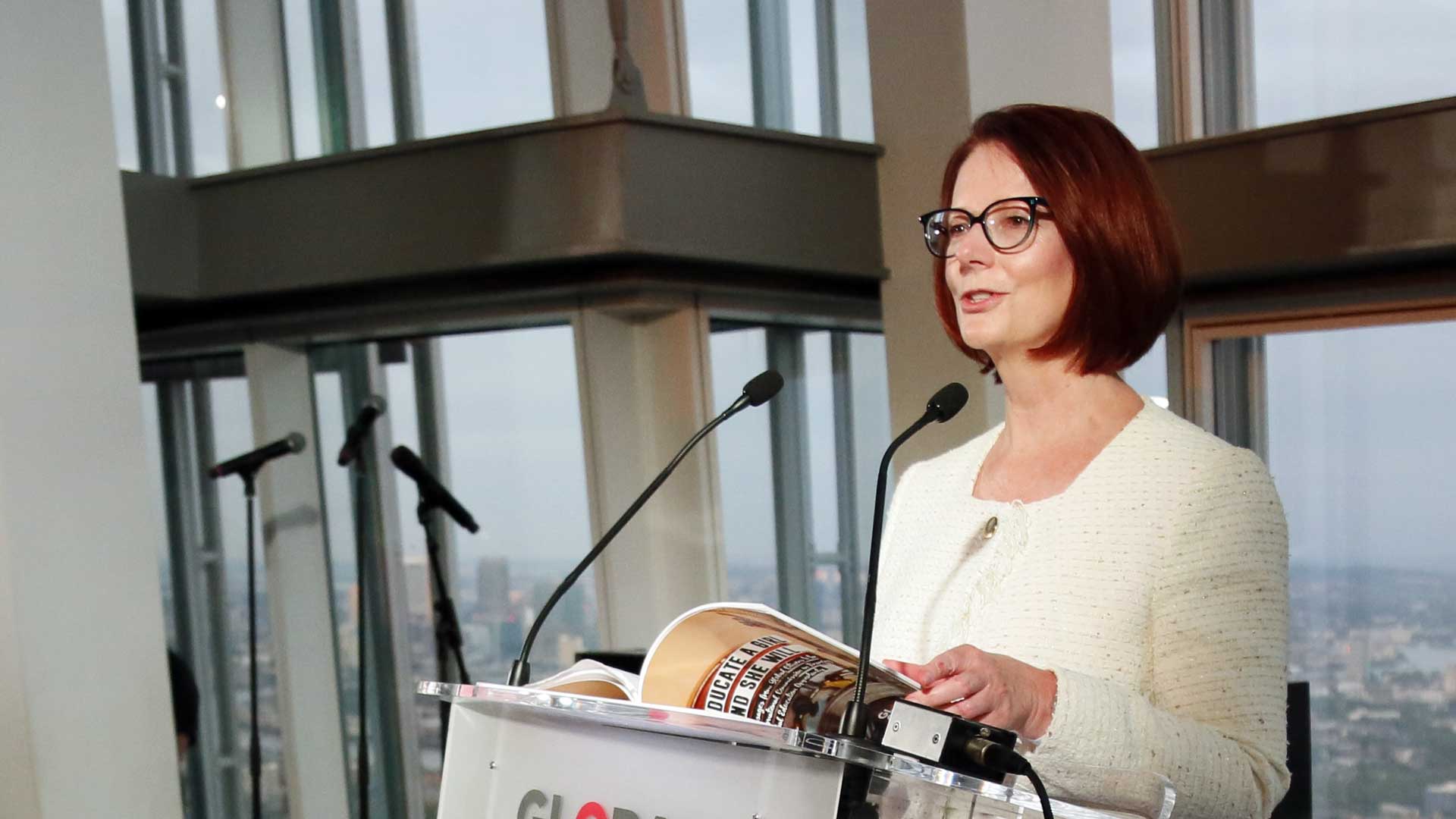
Speechwriting tips from Joel Deane – part 1 of 2
If you’re reading this blog you either want to or are thinking about walking that pathway to politics and standing for public office.
That’s great.
Now comes the hard part: convincing people to support you.
All of which brings me to the dreaded ‘stump speech’.
Every candidate is told they need one. But what exactly is a stump speech?
Think of it as the political version of an elevator pitch.
Basically, it’s what you’re going to tell people to convince them to back you.
You might deliver a formal version of your stump speech during a preselection contest within a political party – or at a candidates’ forum as part of an election campaign.
Or you might deliver a sawn-off, informal version of your stump speech when you’re meeting people outside the local supermarket, or doorknocking, or cold calling locals on an electorate, or being interviewed by a journalist.
A good stump speech is portable and adaptable .
It can be shortened or lengthened. It can be structurally changed – told in part or back-to-front or sideways. And it can be laterally connected to the broader issues (from schools to hospitals to jobs to housing) that voters care about.
In short, it’s a piece of you.
Here are five things to consider before you write your stump speech.
1. A Speech Is A Conversation
Politics is like football. It’s played differently in different parts of the world.
Take Australian democracy.
Here, voting is compulsory. That means voters are often annoyed when they cast their ballots.
Not only that, Australian voting is preferential. That means those often-annoyed voters usually choose the candidate they hate the least rather than the person they love the most (as occurs in first-past-the-post voting).
Those basic rules of Australian democracy, combined with our relatively egalitarian attitudes, generally mean Australian voters are more inclined to back politicians who look and sound like them – talking to rather than at or down to them.
Put it this way: Australian politics is suburban. It’s not the West Wing. It’s the sausage sizzle at Bunnings.
What does that have to do with your stump speech?
You don’t need to try to sound like a Barack Obama or a Winston Churchill or, God forbid, a Donald Trump.

You need to sound like yourself. An amplified, clarified version of yourself that explains who you are, where you come from, how you got here, what you want to do and – most importantly – why that person listening should care about what you care about.
Think of it this way: You’re trying to start a conversation with a roomful of strangers.
2. You’re Telling a Story
Political people talk a lot about ‘narrative’, but that’s just a 50 cent word for ‘story’.
And what is a story?
Past. Present. Future.
Who we are (present), how we got here (past), and where we are going or need to go (future).
In other words, your speech needs to tell a story that connects with the personal and collective lives of people listening.
3. It’s All in the Delivery
Think of your speech like a movie script.
It doesn’t matter whether it’s brilliant on the page. What matters is whether you can deliver the speech on the stage and connect with people.
I’m not saying that the speech draft doesn’t matter (after all, I’m a speechwriter).
What I am saying is that the purpose of a speech draft is to give the speech maker the confidence they need to stand up in front of a bunch of strangers and perform.
And, just to be clear, when I say ‘perform’ I’m not talking about acting a role: I mean being your best self.
4. This is About You
‘Authenticity’ is another of those buzz words thrown around by political people.
That’s another 50 cent word for ‘be yourself’.
Don’t jazz up your lingo. Don’t raid the Thesaurus. Don’t try to sound like Gough Whitlam. Or John Howard. Or Julia Gillard. Or Maggie Thatcher. Or whoever you wish you were.
This process is about getting down to the nitty gritty of who you are.
It’s about thinking about the one thing you want the person or people to know about and care about and saying that one thing.
It’s about speaking in the language and voice that you’d use to communicate with someone you know and care about or love – maybe a parent or a partner or a friend.
It’s about imagining that the person you love isn’t convinced that you should be a politician.
And it’s about finding the words you would use to speak to that person you love and change their mind.
What would you say to them? How would you say it?
Write and speak like that and you’ll be authentic.
Jacqui Lambie’s ‘Dream a little cheaper’ speech is a brilliant example of authenticity that really cuts through.
5. This is Not About You
You’ve thought long and hard about the who, where, what, how, and why of your candidacy.
You have someone in mind and you know the right words and the right way to say those words.
You’re telling your story. You’re speaking in plain language. You’re being your best self. You’re not pretending to be anyone else or putting on an act.
But, remember, this speech is not about you.
The purpose of doing all of this work to get to the heart of the matter about who you are is so that you have the understanding and the authenticity necessary to go out and connect with voters – convincing them you’re the person who best represents their interests.
With that in mind, look for ways to make lateral connections between the personal story you’re telling and the shared story people are living.
If you can make that kind of connection you can make people listen to – and maybe care about – the causes your fighting for.
Now, when you’re ready, read my 10 tips for writing .

About the author
Joel Deane is an award-winning poet, novelist, journalist and speechwriter.
Joel has worked in Melbourne and San Francisco as a journalist, lectured on the use of public language, penned reviews and essays for Australian Book Review , and written speeches for numerous past and present Labor politicians, including Julia Gillard, Bill Shorten, Steve Bracks and John Brumby.
Joel has published one non-fiction book, Catch and Kill: The Politics of Power (2015); two novels, The Norseman’s Song (2010) and Another (2004); and three collections of poetry, Year of the Wasp (2016), Magisterium (2008) and Subterranean Radio Songs (2005). His third novel, Judas Boys , will be published in 2022.
His writing has won the Vincent Buckley Poetry Prize and been a finalist for numerous literary awards, including the John Bray Poetry Award, Prime Minister’s Literary Award, Judith Wright Calanthe Award, Walkley Book Award, the Melbourne Prize for Literature and the Anne Elder Award. In 2019, Joel delivered the Peter Steele Lecture at the Melbourne Writers Festival.
Joel lives in Melbourne and works as a freelance writer.
Explore the Knowledge Hub:
- All Hub Categories
- Why it matters
- Deciding to run
- Getting elected
- Being a political leader
- All media types
- Speech/Presentation
- Cultural diversity
- Social media
- Political participation
- Workplace culture
- Local government
- First Nations
- Campaigning
- Program alum
- Recommendations
- Reset filters
Related Knowledge Hub content
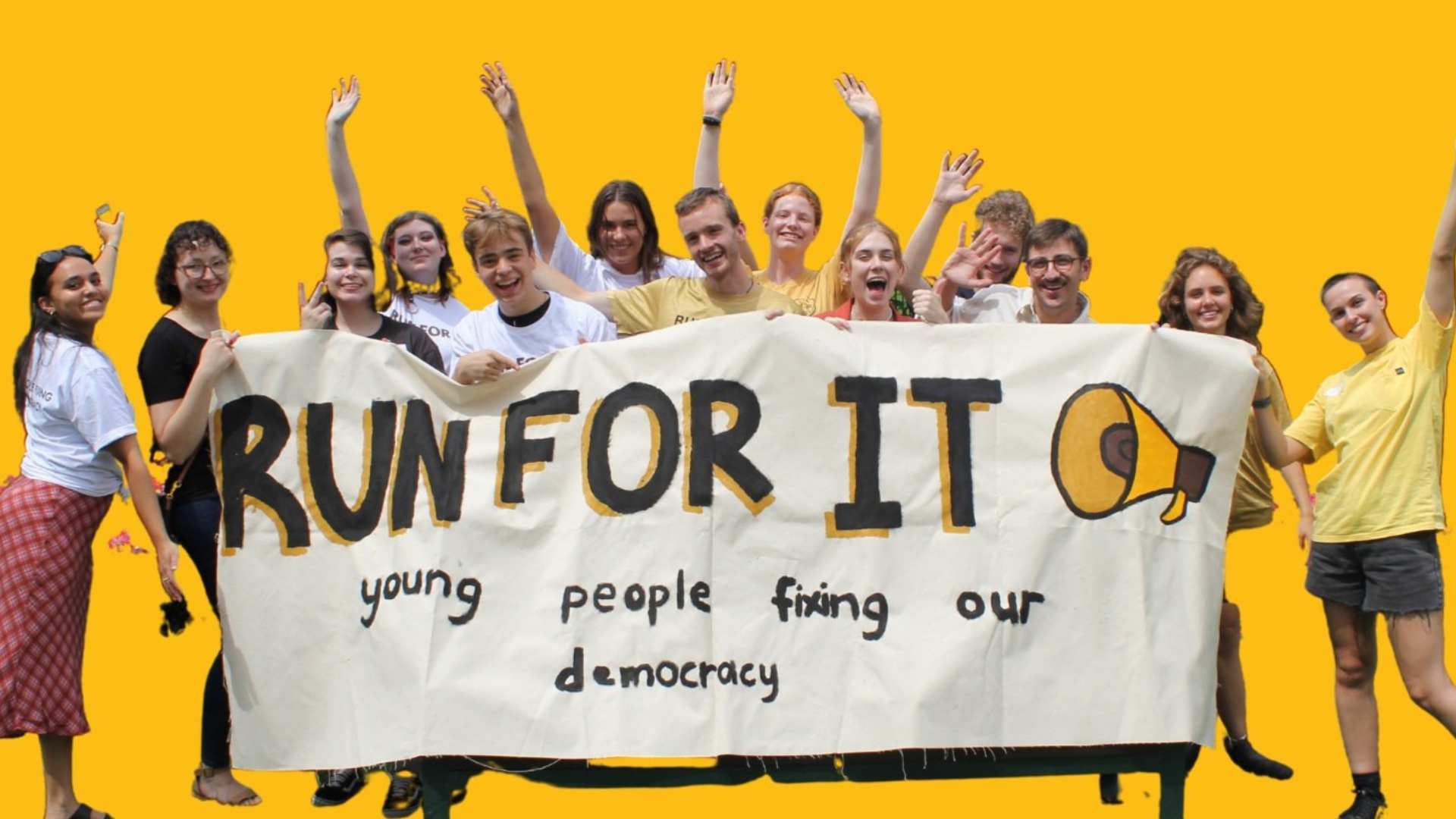
Run For It supports young people (under 35) to run strategic and strong campaigns to get elected to local councils across Australia.
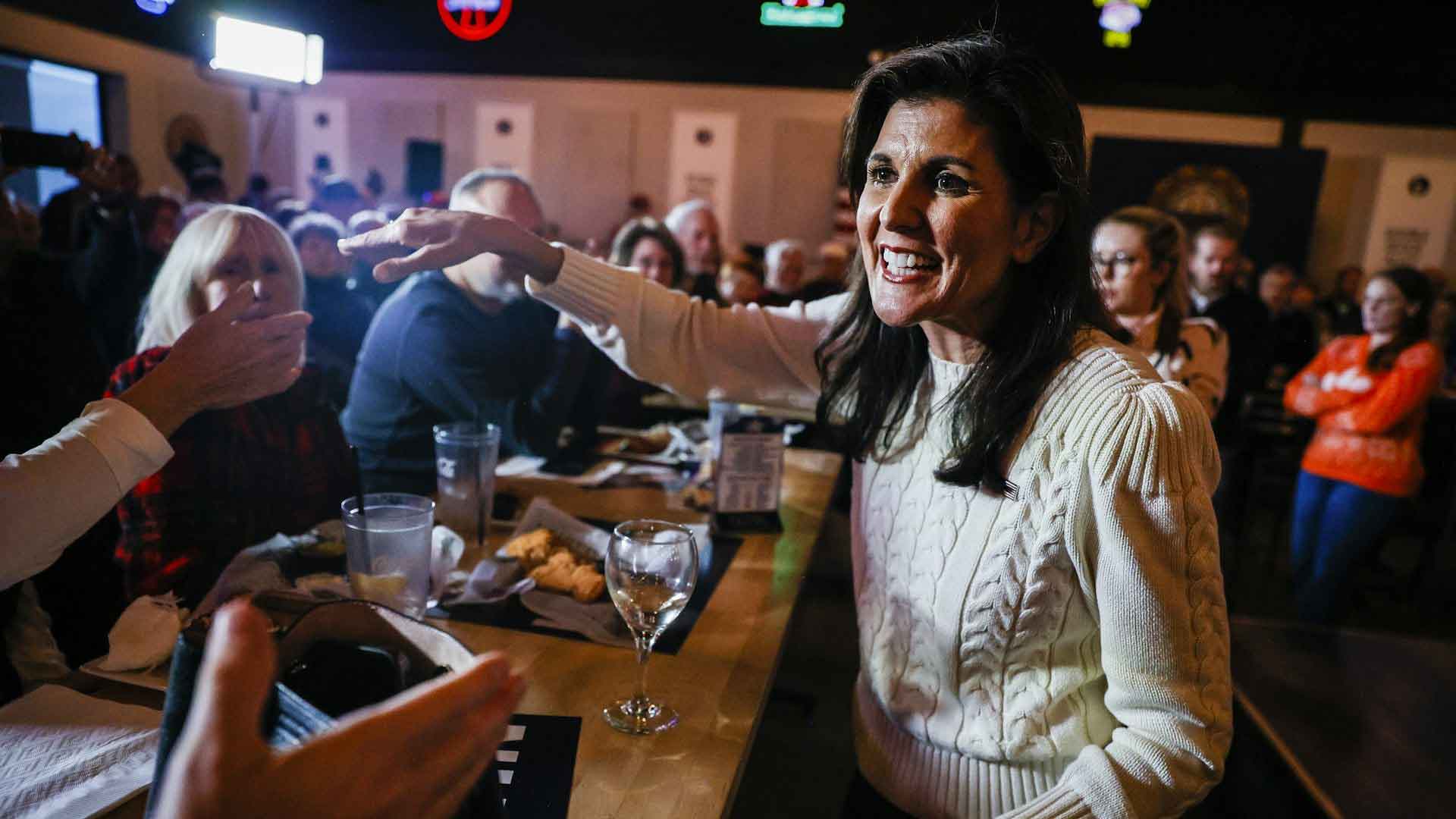
Women presidential candidates like Nikki Haley are more likely to change their positions to reach voters − but this doesn’t necessarily pay off
US researchers show that women presidential candidates, more than the men they run against, often speak differently to different audiences in pursuit of moderation and common ground, and tend to shift their strategies and messages in response to criticism. And they often pay a price for it.
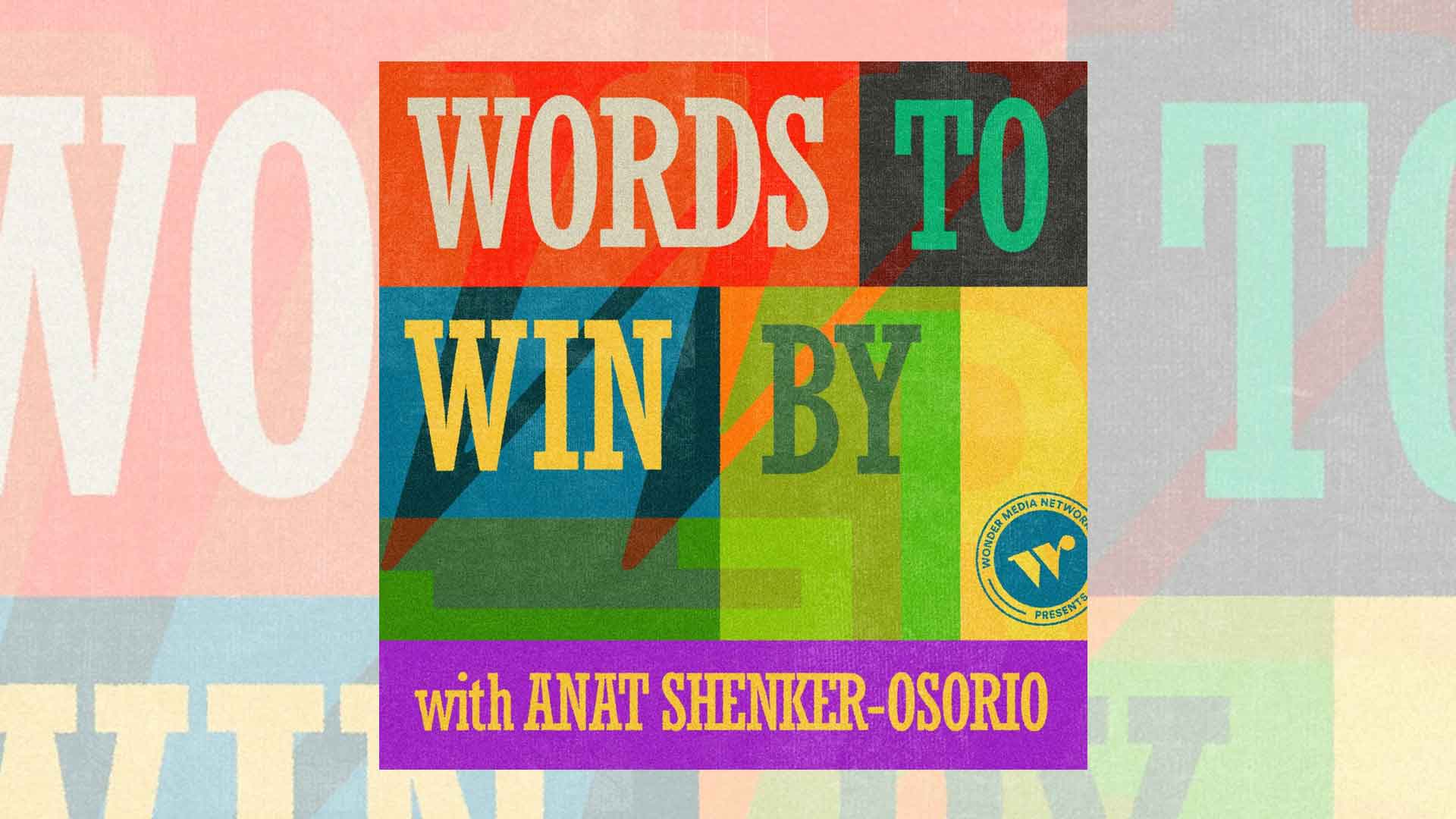
Podcast: Words to Win By
Communications researcher and campaign advisor Anat Shenker-Osorio unpacks the words, tactics and strategies that led to victories for progressive politics around the globe.
Can you spare 1 minute to give us feedback on the Pathways Knowledge Hub?
Help us enhance your experience and improve our content for all visitors.
Founding Partners
University partners.


IMAGES
VIDEO
COMMENTS
Stump Speech: Connect With Voters by Creating a Campaign Speech. Here is our ultimate guide to writing a great stump speech. We all know that the candidate is the campaign's best asset, and the stump speech is the best campaign tool for delivering a 7C's (clear, concise, contrastive, connective, creative, compelling, consistent) message and personal story about the candidate and campaign.
After you write it out, go and learn it. Learn it and practice your stump speech, but don't memorize it. You don't want to come off like a robot. If it helps, write an outline of our speech and refer to that when you're speaking. The first speech you give will likely be difficult and you may hate doing it. That's fine.
The Perfect Presidential Stump Speech. We asked former Republican speechwriter Barton Swaim and Democratic speechwriter Jeffrey Nussbaum to write a totally pandering bipartisan stump speech for an imaginary presidential candidate — one who espouses only positions that a majority of voters agree with. Here's the speech they wrote, including ...
These nine stump speeches are notable for their ability to connect with audiences, convey a powerful message, and leave a lasting impact on listeners: Barack Obama's 2008 "Yes We Can" speech as presidential candidate became iconic, inspiring hope and calling for change. Ex-President Obama's message of unity and progress resonated with ...
Stump Speech Best Practices. There's more to a good speech than hitting these goals. When you write yours, keep the following in mind: A good stump speech is brief. Everyone knows politicians ...
We asked Democratic speechwriter Jeff Nussbaum to write a totally pandering stump speech for an imaginary Democratic presidential candidate — one who espouses only positions that a majority of Democrats agree with (we also did the same with Republicans).Here's the speech he wrote, including notes to explain his phrasing, behind-the-scenes tips on appealing to Democratic voters and the data ...
President Obama's former speechwriter Jon Favreau explains the value of a stump speech. SUBSCRIBE to ABC NEWS: https://www.youtube.com/ABCNews/Watch More on ...
Jon Favreau, a former speechwriter for President Obama, sheds light on the formula for crafting a perfect stump speech. #America 101 Subscribe for more from ...
RationaleExercise.pptx. Your Campaign Stump Speech. A Writing Exercise. Your stump speech is an opportunity to explain who you are, what you believe in, and what voters can expect from you. It may be your only chance to ask for their vote, their money or their volunteer time. You have less than 2 minutes to persuade, so it's important to get ...
Here is our ultimate guide to writing a great stump speech. We all know that the candidate is the campaign's best asset, and the stump speech is the best campaign tool for delivering a 7C's (clear, concise, contrastive, connective, creative, compelling, consistent) message and personal story about the candidate and campaign.
A good stump speech is brief. Try to keep your remarks to five minutes, and be able to go down to 2-3 if necessary. If you can take questions after, make sure to leave time to do so. The key here is to engage with your audience, rather than simply talking at them. Brevity helps with this.
Stump speech is a term used today to describe a candidate's standard speech, delivered day after day during a typical political campaign. But in the 19th century, the phrase held a much more colorful meaning. The phrase became firmly established in the early decades of the 1800s, and stump speeches got their name for a good reason: they would ...
Updated: August 21, 2018 | Original: September 26, 2016. America 101: What is a Stump Speech? Jon Favreau, a former speechwriter for President Obama, sheds light on the formula for crafting a ...
A strong stump speech is one of the most important components of a presidential campaign. In an effective speech, a candidate can weave promises and attacks, lay out ambitious plans, and connect with voters on a personal level. Times reporters following the candidates have deconstructed and annotated four candidates' stump speeches, providing ...
A political stump speech is a standard speech used by a politician running for office. Typically a candidate who schedules many appearances prepares a short standardized stump speech that is repeated verbatim to each audience, before opening to questions. Etymology. The term derives from the early American custom in which candidates campaigned ...
The following outline of a stump speech structure can help you get started. You can use this basic outline to write a speech that is 90 seconds, 5 minutes or 10 minutes long. Each element of a speech has its own particular characteristics and purpose. When these are tied together, they create a structure that allows your speech to flow with
How would you answer the question "Why are you running for office?" That may be one of the hardest questions for a new candidate to answer. However, it is a ...
How to Write a Stump Speech. course. What you'll learn. As a candidate, your stump speech is one of the first opportunities you have to introduce yourself to voters — so it's vital that you capitalize on the moment effectively. Listeners should walk away from your stump speech with a clear understanding of who you are and the positive ...
A stump speech is one of the first and most important opportunities a campaign has to introduce voters to the candidate. Audience members should walk away from a candidate's stump speech with a clear understanding of who the candidate is and the positive impact their positions will have on the community they hope to represent.
the end of term. When the speech is over, there will be a short question period, approximately three minutes. This speech is extemporaneous, which means you are not allowed to read the speech verbatim. You may read, if you choose to, the introduction and conclusion of your speech. But the body of the speech should be delivered from memory or from
Stump Speech. A stump speech is a speech that a politician makes again and again as they travel to different places during a campaign. The speech might change slightly depending on the audience - for example, the candidate might add a few words to the speech to mention local politicians, or to refer to a local specialty.
Address America: Your Six-Word Stump Speech Lesson Plan. In this lesson students will investigate national election stump speeches and then create their own. • Students will identify and analyze the elements of a stump speech by reading excerpts of 2000 - 2008 national election speeches. • Students will write their own six-word stump ...
Here are five things to consider before you write your stump speech. 1. A Speech Is A Conversation. Politics is like football. It's played differently in different parts of the world. Take Australian democracy. Here, voting is compulsory. That means voters are often annoyed when they cast their ballots. Not only that, Australian voting is ...
She didn't go out on the stump like Barack Obama did, but she engaged through When We All Vote, which she launched in 2018, gave a speech at the Democratic National Convention, and posted on social media supporting Biden's campaign. ... "The Light We Carry," writing: "My friend Kathleen and I keep regular morning dates to walk by the river." ...
The comment elicited one of the crowd's most energized cheers during Mr. Trump's 90-minute speech. Then, in unison, his supporters began to chant, "U.S.A."